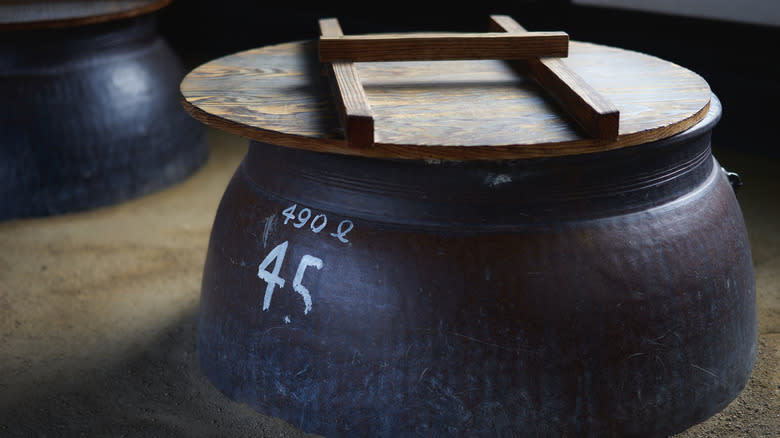The Cultural Significance Of Shochu, A Festive Japanese Drink

Although it hasn't quite achieved the same success abroad as sake, shochu is a unique and important spirit in Japan. Shochu can legally be made from dozens of different ingredients but is typically distilled from barley, sweet potato, or rice. After distillation, you're left with a crisp, clear spirit that's unlike anything you've tasted before. Some have sweet flavors of melon and honey, while others are earthy, bitter, and herbal.
The cultural significance of shochu has changed over the years, but its importance to Japan has only grown in the past few decades since new methods of distillation have made the flavor more approachable. Drinking culture is interesting because there's a noticeable divide between the academics of drinking culture and the lived experience of it. With that caveat in mind, shochu is a drink of celebration, religion, and community. It wasn't so long ago that people would pour the first bit of shochu out on the floor to honor God's presence and generosity. They would even share the same cup as a sign of togetherness.
You aren't likely to see these traditions practiced as regularly today, but shochu is still a tool for celebrating. Finished a project? Grab some shochu. Your family is getting together? Grab some shochu. Celebrating a festival? You guessed it: shochu time. If it sounds a lot like drinking culture in other countries, that's because it is. But while similarities abound, its significance throughout Japanese history sets it apart.
Read more: 13 Liquors Your Home Bar Should Have
Sipping On Shochu

The science of distilling made its way to Japan in the 1400s, and the shochu tradition slowly began to form afterward. It wasn't until 1559 that the first use of the word shochu was documented, but it was clear by then that tradition had already begun to surround it. The text in question was graffiti inscribed on a shrine, which was discovered in 1954 after the shrine was taken apart for renovations. The workers who constructed the shrine complained in the graffiti that the priest was too stingy to give them shochu for their hard work.
Apart from originating there, the thing that makes shochu unambiguously Japanese is the use of koji, which is what gives miso and soy sauce their unique umami flavors. It's also a crucial component in the production of sake. For both sake and shochu, koji breaks down the complex starches of their base ingredient to begin the fermentation process. There are several varieties of shochu, including Japan's oldest distilled drink, awamori, but koji is the thread that binds them together.
In the old days, people would send earthenware jars of shochu to the shogunate and other important political powers, keep high-quality shochu on hand to serve to unexpected guests, and give it as a tip for a job well done. These days, shochu is more casual, which makes us hopeful it will eventually make its way out West.
Read the original article on Tasting Table

